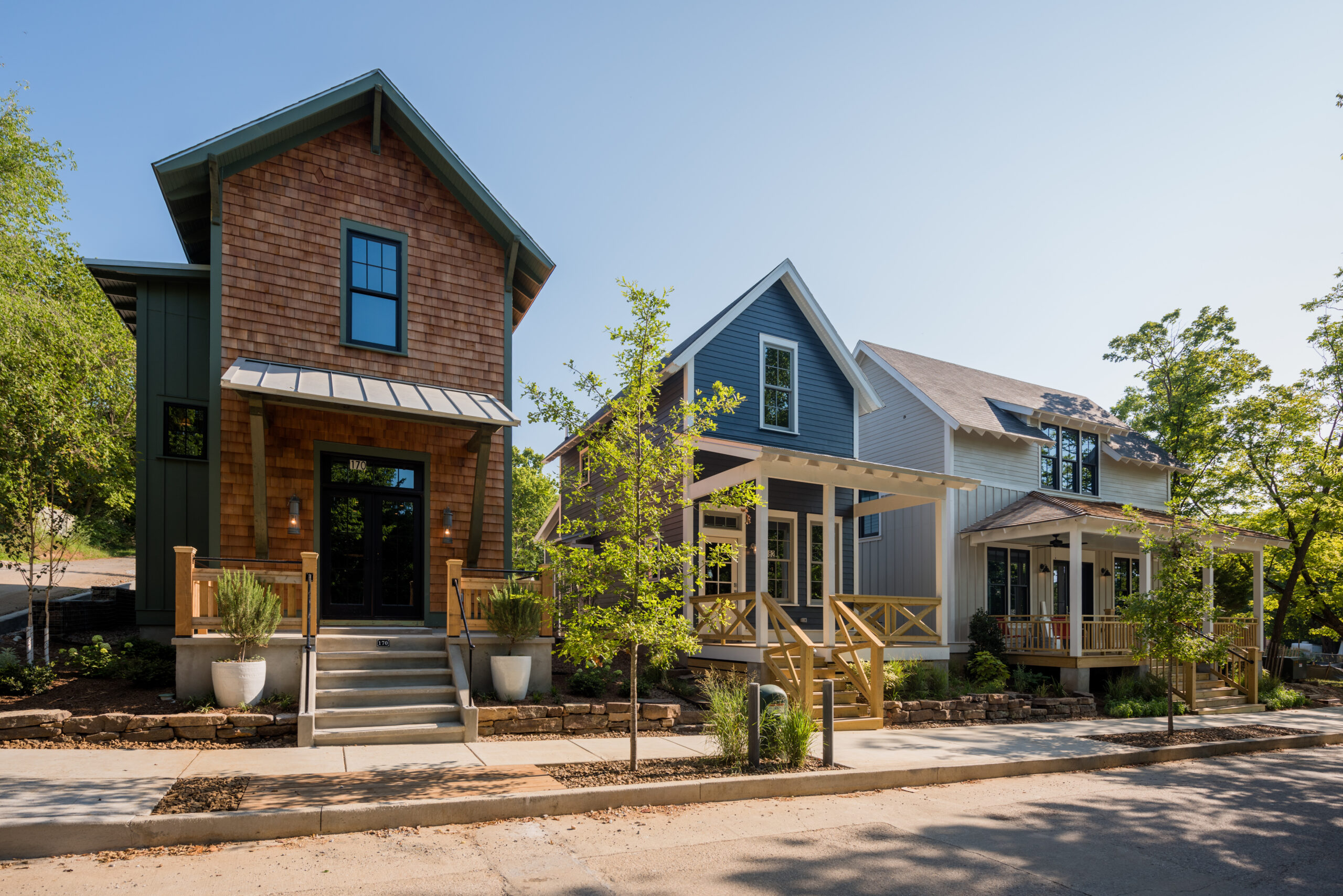The demographic shift toward one- and two-person households has created an unmet need for small homes in walkable locations. This is often best provided within existing neighborhoods near downtowns, otherwise known as infill development.
Infill development isn’t a new product type; it’s the way towns naturally grow. Great towns aren’t built in their climax condition— they’re incrementally built with more intense buildings replacing less intense ones as land value goes up and needs change.
When this development follows the pattern of traditional town form—that is, inherently dense—it makes the best use of limited civic resources and land. It also provides more naturally affordable housing and commercial spaces that can grow small, locally owned businesses. It’s the best defense against the sprawl machine eating our countryside.
With all that in mind, I believe in and try to build infill development that meets two standards: very dense and very cute. People are so used to ugly, boring projects that they’ll forgive a multitude of sins on a lovable project.
I’m testing these theories with the South St. Cottages, six blocks from the Fayetteville Square with a view of the Ozark hills. The tiny, 1.32-acre site was formerly a bare CMU-walled triplex, a burned down house and a tiny commercial building that served as a gas station, liquor store and barbeque stand in its time.
The master plan includes nine street-facing, fee-simple, single-family homes several with garage apartments. It also offers one micro-retail building (800 square feet) with two 2-bedroom apartments above it and 12 park-under townhouses facing a shared apple orchard that make the most of a deceptively steep site by utilizing garages instead of retaining walls.
That’s 26 units on 1.32 acres, a density of nearly 20 units per acre in a pattern that feels like a neighborhood rather than a complex and can be purchased by residents with traditional 30-year mortgages.
On South St., I also committed to providing thoughtful design and exceptionally high-quality materials at an overall affordable purchase price. This required both small footprints and small lots.
Small lots make the most of high land values in desirable, walkable locations. Small houses can provide quality at an attainable total price point. Two of the three first-phase homes sold for total purchase prices under the federal affordable standards for Fayetteville and yet all the homes include the finishes and materials you’d generally only see in million-dollar custom homes in our market.
The trade-off to this approach is, of course, a price-per-square-foot cost double or even triple that of suburban homes with ample cheap square footage of bonus rooms and walk-in-closets. But people don’t buy houses based on price-per-square-foot. Total purchase price, utility bills and transportation costs are much more important metrics than price-per-square-foot to the actual monthly budget of a buyer.
Also, a small footprint naturally yields reduced maintenance and utility costs, magnified with energy efficient construction. Focusing on downtown locations reduces transportation costs by building more homes where they need to be, in close proximity to services, schools, jobs, parks and entertainment.
Infill development can provide gentle density by delivering housing types where we need them most. But to be successful, I believe these projects have to put people—both inhabitants and neighbors —first.
See more at southstcottages.com
The South St. Cottages: Floor Plans Plus Location Equals Winning



